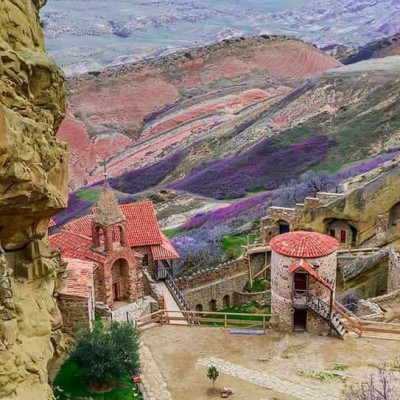
Georgia is a land of mountains, rivers, and centuries-old history, and its small arch bridges are perfect examples of the country’s rich architectural heritage. Scattered across the regions of Imereti, Svaneti, Kakheti, and Mtskheta-Mtianeti, these modest yet elegant bridges were built to connect communities, facilitate trade, and withstand the test of time. Most of these bridges date back to the medieval period, from the 11th to the 18th centuries, though some are even older. They were constructed primarily of local stone, with semicircular arches that not only create a visually appealing structure but also distribute weight efficiently, allowing them to survive floods and heavy traffic for centuries. The small arch bridges were essential in connecting villages divided by rivers, mountain streams, and ravines, making travel safer and commerce possible in remote regions. One of the most famous examples is the Queen Tamar Bridge in Mtskheta, built during the reign of Georgia’s revered medieval queen, Tamar the Great, reflecting both functional engineering and aesthetic grace. In Svaneti, numerous small bridges blend harmoniously with the natural landscape, their stones covered with moss and lichen, giving them a timeless appearance that captures the imagination of travelers and photographers alike. These bridges also hold cultural significance: many have legends associated with their construction, often involving local heroes or tragic love stories, and they are featured in Georgian literature and folk tales. The design principles of these small arch bridges reveal a deep understanding of geometry, water flow, and material durability. Builders often used dry-stone masonry, carefully fitting stones without mortar, relying on precision and weight distribution to ensure stability. This technique allowed bridges to flex slightly during seasonal changes, which is why many have remained intact for hundreds of years. Today, these bridges are not only functional but also major tourist attractions, drawing visitors interested in history, architecture, and scenic photography. Some have been restored to preserve their historical appearance, while others retain their original charm and rustic appeal. Walking across these bridges, travelers can imagine medieval traders, villagers, and travelers who once crossed them, feeling a tangible connection to Georgia’s past. The small arch bridges are often situated in picturesque settings, surrounded by rivers with crystal-clear water, forests, and mountains, making them perfect spots for sightseeing and cultural exploration. Exploring these bridges provides insights into local engineering methods, regional materials, and historical development of transportation routes. Whether you are an architecture enthusiast, a history lover, or a casual traveler seeking beauty and serenity, Georgia’s small arch bridges offer a unique experience that combines nature, heritage, and human ingenuity. They are reminders of how simple yet carefully constructed infrastructure can shape communities, endure the test of time, and enrich the cultural landscape of a nation, making them an indispensable part of Georgia’s historical and scenic treasures.






 Deutsch
Deutsch
 русский
русский
